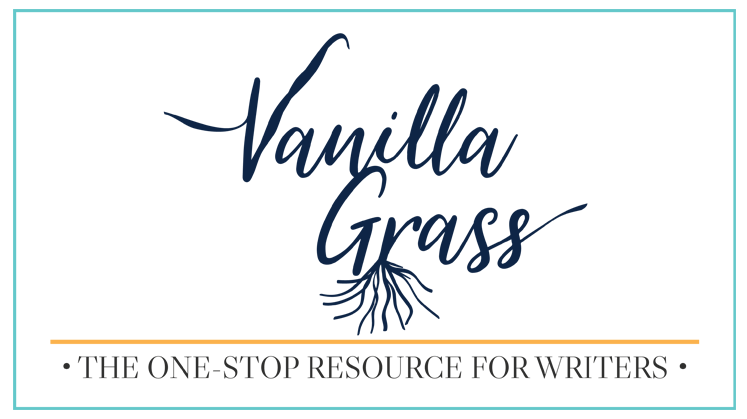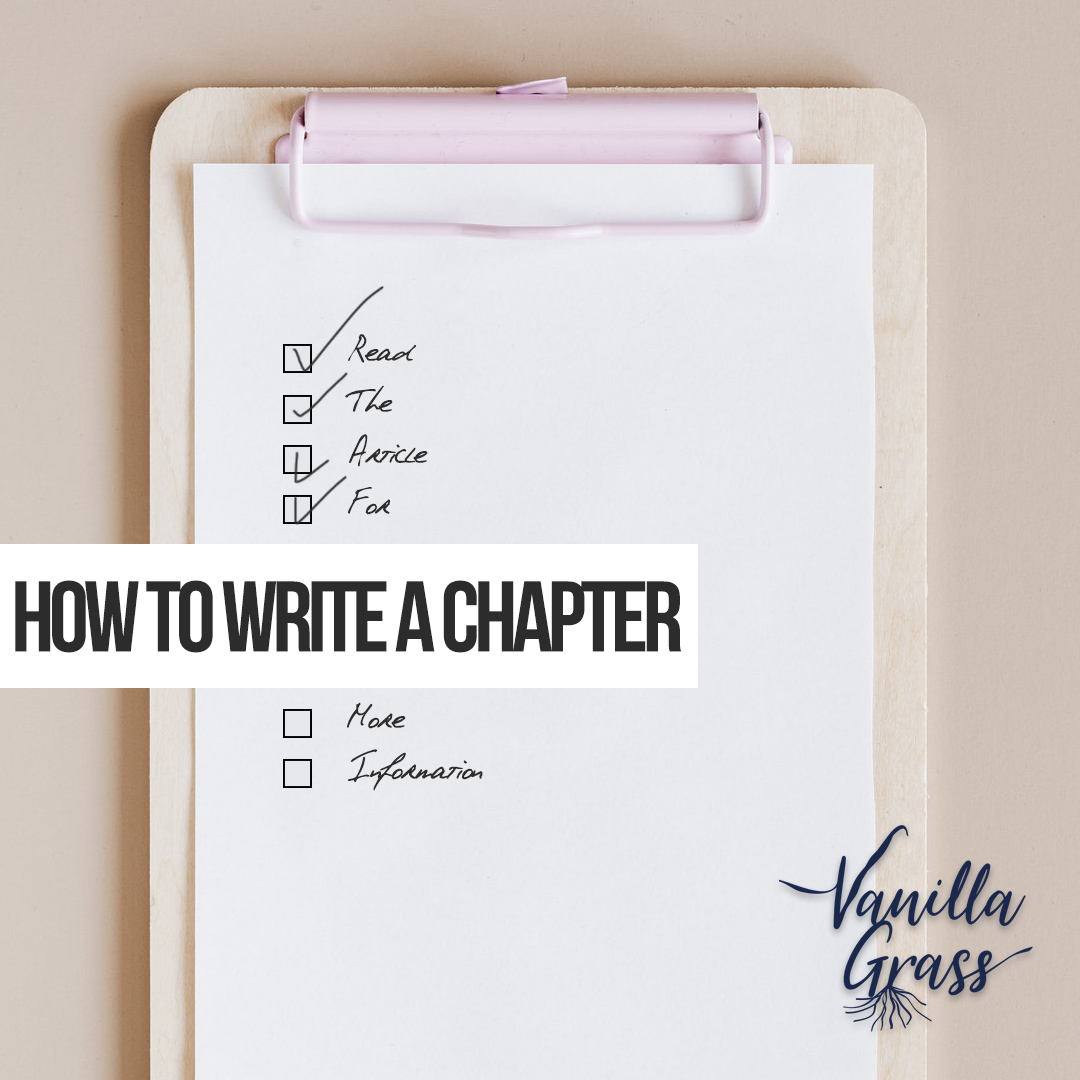Why do I need a How to Write a Chapter Checklist?
Recently I started plotting another story and although I’ve written close to a dozen novels, I found myself freaking out once I got to the chapter level. I had focused so much on plot and character development that I forgot how to structure chapters. I took a step back from my work, did some research, and pulled up notes that I’d previously written myself. Then I compiled them all into a How to Write a Chapter Checklist so I won’t stumble again.
I started using my checklist with my pre-writing prep and guess what happened? I saw so many holes in my story that I hadn’t seen with my regular plotting. Chapters I thought were necessary became obsolete unless I added more tension/obstacles, etc. Through the checklist, I created more connections, tying bits and pieces of my story to not only one character, but several, and to not only one plot point, but many.
Below you’ll find the first five items on my checklist. The rest will be included in our new Novel Writing checklist e-book, along with more depth on these topics.
How to Write a Chapter – Checklist #1 – Emotion

My readers tend to tell me that they feel a lot of emotions when they read my books. Almost all tell me they’ve cried when I wanted them to cry, or laugh when I needed to lighten things up. So, I’d like to believe I’m an authority on emotionally writing.
In my opinion, every chapter should start with emotion. Has anyone else said that? I don’t know, but I’m saying it now and I tend to write about emotion a lot. See my How to Start a book post and examples in Quick Tips to Improve Writing #1.
Every chapter should start with emotion.
Dedra Tregaskis, Vanilla Grass
Why? Because if your character is believable, they will have an emotion. That emotion should be based on what happened before the chapter started. Understanding the emotion of your character gives us a starting point for the chapter. We will either go up or down on your character’s rollercoaster from there based on the obstacles and growth you throw in.
Checklist #2 – Theme
Every chapter should have a theme. Again, has anyone else said that? I don’t know, but I’m saying it now.
Every chapter should have a theme.
Dedra Tregaskis, Vanilla Grass
I’ve recently investigated the need for theme and the changes I’ve made to my writing are monumental (we’ll be including this look at the needs for theme and how to effectively add it in our e-book too).
Theme might seem overwhelming but I’ll give you a quick analogy to improve understanding.
Theme is like an amusement park.

You may have heard them referred to as a theme park. You could easily say that a theme park, is all about people having fun, but it will be fun in different ways for different people.
Put me on a tilt-a-whirl and I’ll feel miserable all evening. Not fun. But give me a ticket for a roller coaster and I’ll love the exhilaration of every drop.
For others, theme parks are fun because of the food: cotton candy, funnel cakes, corn dogs, and twisted lemonade.
Still, others go for people watching or hanging out with friends. The theme is fun, but each person or “character” perceives fun at a theme park in different ways. The overarching theme in your book should be similar in that your characters interact with the theme in individual ways.
But what about infusing a stand-alone theme in each chapter? What if the events that happen in your chapters all revolve around themes? (Extra points if they can all be strung to your overarching theme).
Examples:
Consider how the interaction changes between characters when there is and isn’t an underlying theme in the chapter. Imagine you’re writing a romance and you have a main character (MC) that’s very close to her grandfather. The relative needs to die in the next chapter to further the story, but you also want the girl to connect to her romantic interest (RI).
The RI could simply comfort her, but what if you create a theme around death. What if (I ask this a lot when I plot) your RI loses their beloved fish during the chapter before he interacts with the MC. He’s mourning the loss of his fish, his heart is tender and he finds out the girl’s grandfather dies. Can’t you see how he’ll be more sympathetic to her feelings? The MC might be more sympathetic as well.
What if we want the characters to clash instead? We could create a meaningless bump-into-each-other (so Hallmark!) and add an insulting comment. OR we could make the RI’s car die. Maybe he hated that car and who cares if it died? He’s better off without it. Death means good-riddance to him. His reaction to the grandfather’s death could also be flippant and then she’ll want to throat punch him.
Can you see the possibility of rich tension that can result from tying events in each chapter to a similar theme?
Now we can just tell the reader that the RI is sympathetic in the first example, but tying in the theme gives us opportunities to show he’s sympathetic. The same goes for the tension example. He can just be an inconsiderate jerk, or we can show his mindset and experience and show that he’s really not the jerk our MC will believe him to be, he just thinks death means room for something new.
Adding a unifying theme might not work in every chapter. The worst thing to do in a story is push agendas, but if you can think deeply to connect more dots, you’ll heighten the reward for your readers.
How to Write a Chapter – Checklist #3 – Mirroring
One of my favorite writing tools is mirroring the end and beginning scenes. I love it when authors and movie makers do this. For me, it makes everything feel complete. Often, I’ve forgotten the beginning scene by the end so when a master includes this device, I wonder what else I missed and I want to read or view the story again.
So here’s my question. What if you add mirrors in your chapters?

Duh, duh, duh. Guess what? I tried it and the tool of using mirrors in chapters rocks. Maybe it’s overkill to do in every single chapter but connecting your dots adds to a richer experience.
Consider different ways to mirror:
- Emotions of the same character (example: happy, sad, then happy again).
- Emotions of different characters (i.e. one person is angry, then by the end, the others are angry).
- An object (imagine a red balloon at the beginning of a chapter and a person dying at the end with a red balloon slipping from their fingers).
- An action (maybe start off with a character running a race and at the end of the chapter, they are running for their life).
Cool concept right? Ready for more?
Checklist #4 – Goals
Character goals are essential for making proactive characters. Even in the beginning when characters should be more reactive, they still need goals (although flawed). Each chapter should consider the two types of goals: short term and long term.
Short Term Goals
The purpose of short term goals is to move a chapter along. Sometime the character knows the goal at the very beginning. Other times, they’ll come up with a goal after an obstacle gets dumped on them (see the obstacles section below). Even if your character is still in the making mistakes stage, they need to look ahead to something they can more easily accomplish. You can spice things up by making seemingly easy things harder. Torture, isn’t it lovely?
Long Term Goals
These short term goals work even better when they tie into the long term goal. Achieving those goals can move your MC toward their end dream, or unknowingly away from it. Regardless if every goal ties into the end one, your MC needs to be striving toward their aspirations.
Allowing them to fail helps them to grow, or at least it should for a richer story. How can failing at the goals help your character gain the tools necessary to get what they ultimately want? Ask yourself this question until you can flesh out the answer. And then write bits and pieces into each and every chapter.
How to Write a Chapter – Checklist #5 – Obstacles

Without obstacles, our hero will easily see their goal and achieve it.
BORING.
To write an effective novel, each chapter should present the character with a new obstacle or element to a previous obstacle, making goals even harder.
Here’s where you bust out your torture devices. Whips, chains. waterboarding, and sharp objects work well in spy movies, but what about in a contemporary romance? A space opera? An historic drama on the island of Tahiti? Make your obstacles relevant to your genre, character, theme, setting, EVERYTHING.
Make it personal.
What would hurt your character the most? What are they afraid of doing or losing and make that happen in your story. Don’t just make your character afraid of snakes because it’s convenient. Tie it into your backstory and then go big or go home.
Make the obstacles matter.
And make sure you throw some into each and every chapter.
Thanks for How to Write a Chapter – a Checklist for novels. We hope this helps elevate your writing. Don’t forget to check out our new Novel Writing Checklist e-book.

